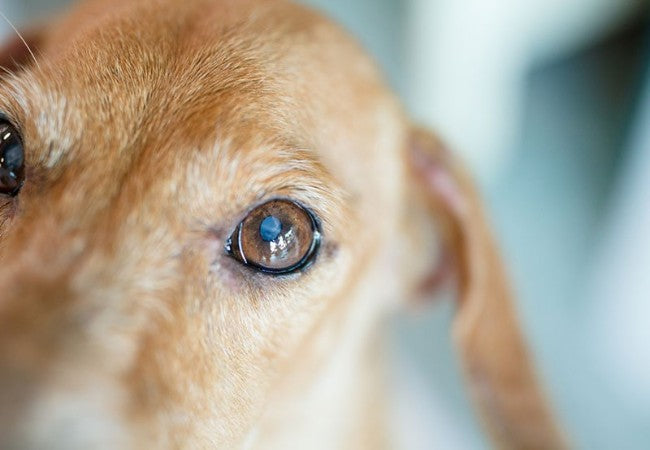Vet Guide to Iris Atrophy in Dogs 2025 🐶🩺

In this article
Vet Guide to Iris Atrophy in Dogs 2025 🐶🩺
By Dr. Duncan Houston BVSc
Iris atrophy is the thinning and weakening of the iris muscle, often part of normal aging (senile atrophy) or secondary to chronic eye conditions like uveitis or glaucoma. It leads to uneven, scalloped pupils, holes in the iris, slow or absent light responses, and sensitivity to bright light, though vision often remains unaffected unless there’s underlying disease.
📍 Causes & Risk Factors
- Primary (senile) iris atrophy: Age-related decline in iris sphincter muscles; common in middle-aged and senior dogs, especially small breeds like Miniature Schnauzers and Poodles.
- Secondary iris atrophy: Results from chronic eye inflammation (uveitis) or high intraocular pressure (glaucoma), and can follow ocular trauma.
👀 Symptoms to Watch For
- Unequal pupil sizes (anisocoria) and scalloped or “moth-eaten” pupillary margins.
- Holes or translucent patches in the iris visible with transillumination.
- Sluggish or absent light reflexes and mild photophobia.
- Possible faded iris color or hyperpigmented spots.
🔬 Diagnostic Approach
- Ophthalmic exam: Slit-lamp and retroillumination to assess iris structure, holes, and pupillary reflexes.
- Tonometry: Measure intraocular pressure to check for glaucoma.
- Dilated fundic exam: Rule out cataracts, retinal disease, or uveal inflammation.
- History review: Look for prior uveitis, trauma, or chronic eye pain.
💊 Management & Care
- Primary iris atrophy: No specific treatment needed; monitor annually; manage light sensitivity with doggles outdoors.
- Secondary iris atrophy: Treat underlying causes—manage uveitis or glaucoma with anti-inflammatories, ocular pressure control, and pain relief.
- Comfort adjustments: Provide gentle lighting changes indoors; avoid bright lights; monitor for new signs.
📈 Prognosis & Monitoring
- Primary atrophy is benign with minimal visual impact; prognosis is excellent.
- Secondary atrophy prognosis depends on control of the underlying condition; regular follow-up is essential.
- Schedule yearly eye exams; more frequently if secondary disease is present. Track pupil changes and comfort.
✅ Dr Houston’s Clinical Tips
- 🔍 Incorporate pupillary and iris assessment into annual geriatric exams.
- 📸 Document changes in pupil shape, size, and light response over time.
- 🛡 Recommend sun-protective eyewear for light-sensitive dogs.
- 🩺 Investigate irregular pupil margins—rule out uveitis, trauma, or glaucoma before attributing changes to aging.
- ☎️ Refer any dog with progressive iris change or ocular pain to a veterinary ophthalmologist.
If you’ve noticed your dog's pupils becoming uneven, scalloped, or unresponsive to light—especially in older, small-breed dogs—consult via AskAVet.com.🐾❤️






